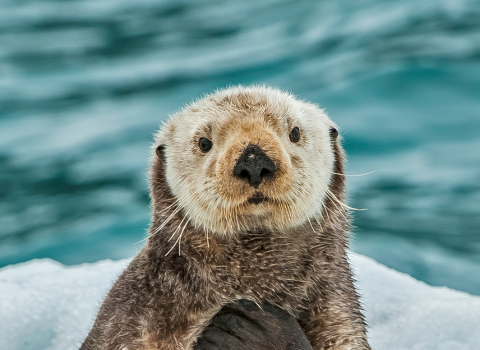As deeply troubling reports continue to come in about ocean waters hitting historic hot temperatures, sectors …
8 Octopuses You Need to Meet
🐙 If you ‘ink’ you know all about octopuses—‘sea’ if you know these 8 unique cephalopods!
Out of all the animals that live in the ocean—octopuses have to be one of my favorite. I know everyone reading this blog will agree that octopuses are completely fascinating. They are extremely intelligent—earning the title of the smartest invertebrates in the world. Octopuses have a superpower-worthy defense mechanism—spraying ink as a smokescreen to avoid being eaten. And, let’s face it—if you played a game of hide and seek with an octopus—eight hands down—you would lose! They can change the color and texture of their skin to match their surroundings. This handy camouflage keeps them safe from predators.
Certainly, as an ocean enthusiast—you already knew each of those fun facts about the octopus. BUT, did you know that there is a range of different species of octopuses that each have their own unique skills and characteristics? Here are eight octopuses that YOU need to meet.
Blue-ringed octopus
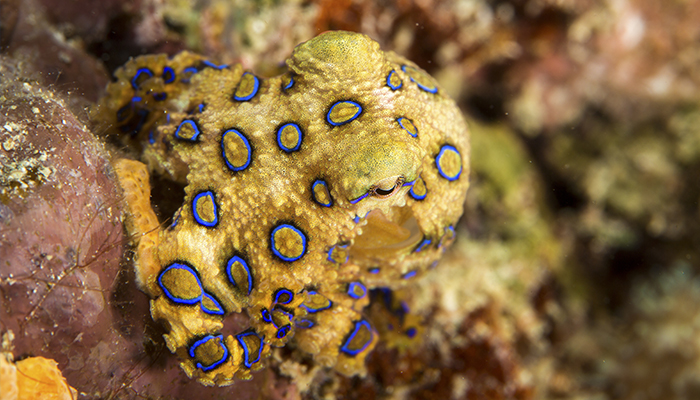
Small, but deadly—the blue-ringed octopus is recognized as one of the most dangerous animals in the ocean. Its venom is 1,000 times more powerful than cyanide, and this tiny octopus packs enough venom to kill 26 humans within minutes. It’s best to keep your distance if you encounter a blue-ringed octopus in the ocean. Its bite is usually painless, so you might not know you’ve been bitten until it’s too late. Fortunately, the blue-ringed octopus isn’t aggressive; it’s only likely to bite humans if cornered or handled.
Mimic octopus

The mimic octopus is the ultimate master of disguise. This sneaky octopus has taken camouflage to a whole new level. In addition to changing its color and texture, the mimic octopus will change the way it moves its arms to impersonate a variety of other marine species. It can “mimic” 15 different species (that we know of)! Divers have reportedly seen mimic octopuses imitating even more wild species, such as anemones, jellyfish, feather stars, giant crabs, mantis shrimp, seahorses and more.
Giant Pacific octopus

I’m sure it’s no surprise that the giant Pacific octopus is largest octopus species. It is also the longest living. It is probably one of the most easily recognizable octopuses because of its bright reddish-pink color. The giant Pacific octopus enjoys a life of solitude and enjoys spending time alone in their den—only venturing out to hunt for food.
Common octopus
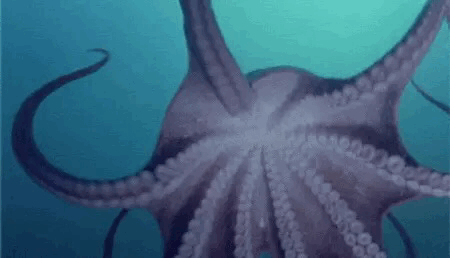
This octopus isn’t easily offended—and doesn’t mind at all being called common. They know they are one of the most unique-looking octopuses—with a very large head and eyes that seem too large for the rest of their body. Like all octopuses—the common octopus is very flexible! They can easily squeeze through narrow cracks and small holes.
~~~~~~~~~~~~~~~
Phew! You’ve made it through the first four types of octopus. Congratulations. You’ve earned a much-needed JOKE BREAK!
How do you make an octopus laugh?
You give it ten-tickles (hahahaha).
~~~~~~~~~~~~~~~
Coconut octopus
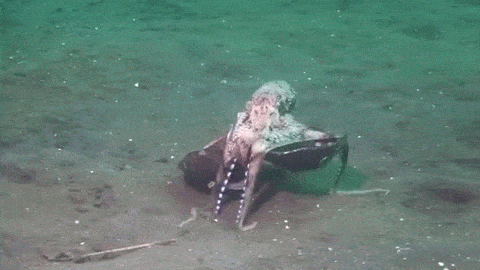
This octopus has to be my favorite of the ones on this list—they find shells in the ocean and hide in them or carry them around. The coconut octopus has the foresight to carry around coconut shells to use as protective shelters when it is out exploring—to ensure it has someplace to hide should a predator show up. They are so smart!
California two-spot octopus
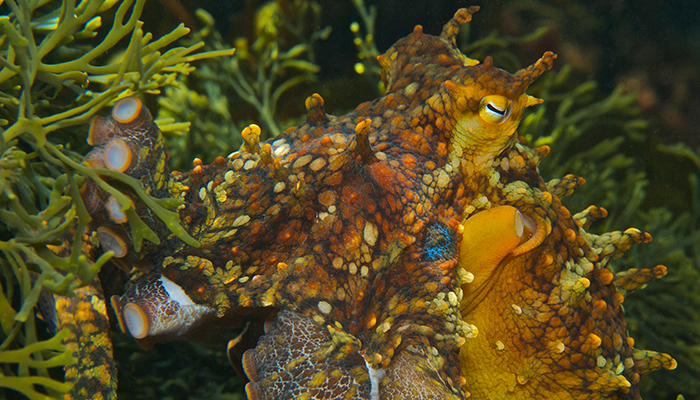
You can easily identify this colorful octopus by the circular blue eyespots on each side of its head. This octopus prefers living in shallow ocean waters—and relies on being able to reach the sandy bottoms of the water in order to hide in rocks and crevices found there. The California two-spot octopus is reported to be the friendliest octopus. While most octopuses will immediately swim away—when approached—this octopus doesn’t seem to mind the company of others, even if they only have two arms.
Blanket octopus
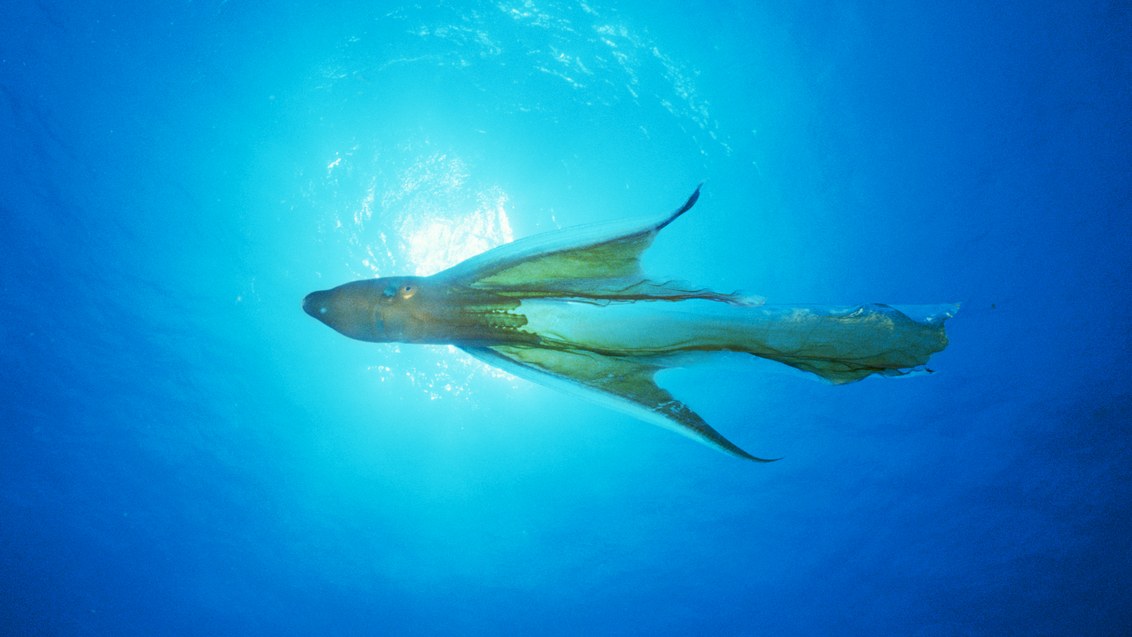
This has to be the wildest-looking octopus out there! This octopus looks like a wet blanket floating in the ocean—no joke. The blanket octopus spends its entire life in the open ocean. For many species of animal, males are bigger than females. But the opposite is true for the blanket octopus. The females are 10,000 times bigger than males. You read that correctly—10,000 times bigger!
Caribbean reef octopus
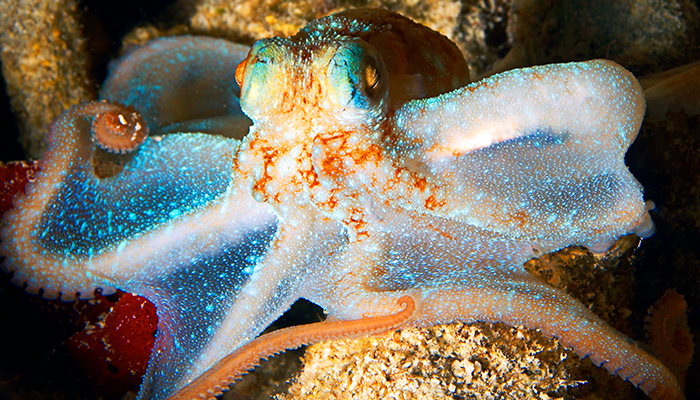
And, finally—the last in our long list of octopuses to meet—the Caribbean reef octopus. They live among reefs and grass beds throughout the tropical waters of western Atlantic, Bahamas, Caribbean and northern South America. They are also a beautiful blue-green color and have a very short lifespan, generally only a year to a year and a half. The Caribbean reef octopus is a nighttime hunter—using the cover of dark to search for prey among reefs and sea grass beds. They also have built-in reflective skin—and are easy to spot at night with dive lights.
Octopuses all over the world need your help.
The octopus may be able to escape some of the trickiest situations, but the ocean plastics villain may prove deadlier than any of its natural predators ever could.
But we can stop this. We can keep ocean plastics out of these creatures’ homes.
Make a promise to help octopuses today: make the pledge that whenever you’re able, you’ll say “no thanks” to single-use plastics like those that marine wildlife are so vulnerable to. Promise our ocean’s cephalopods that you’ll commit to being mindful and making responsible choices for the sake of all marine wildlife.






